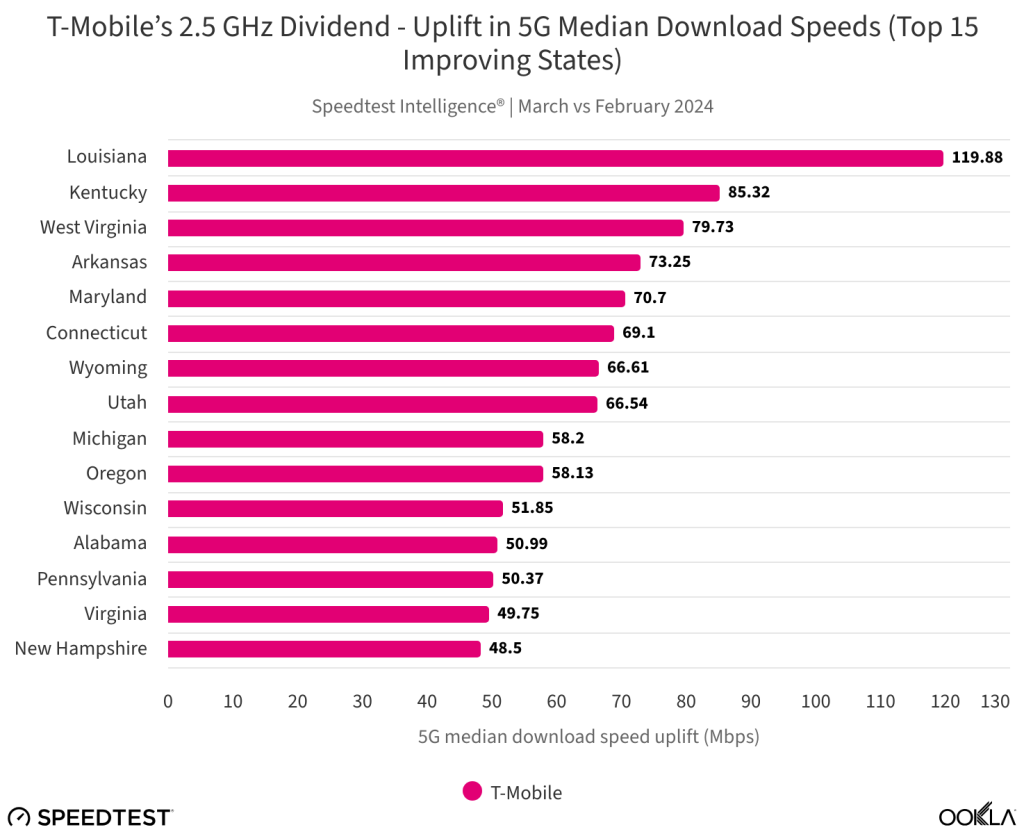5G performance surges as US carriers deploy mid-band spectrum
This positive trend correlates directly with the performance upgrades facilitated by new spectrum.

Recent data from Ookla’s Speedtest Intelligence reveals that the US is undergoing a notable enhancement in 5G performance, driven by major carriers’ deployment of newly acquired mid-band spectrum.
T-Mobile has maintained its leadership position by leveraging additional 2.5 GHz spectrum acquired in Auction 108. In just one month, the carrier’s median 5G download speed surged by an impressive 29.64 Mbps, reaching 287.14 Mbps in March 2024. This boost is particularly beneficial in rural areas, effectively narrowing the digital divide between urban and rural regions.
Verizon and AT&T have also made significant progress following their access to C-band spectrum. Verizon’s median 5G download speed jumped from 133.56 Mbps in June 2023 to 224.67 Mbps by March 2024. AT&T, while trailing slightly behind, has seen steady improvements, achieving a speed of 145.36 Mbps.
The deployment of new spectrum has not only enhanced speed metrics but also improved consumer sentiment, as indicated by Net Promoter Scores (NPS) for all three carriers. This positive trend correlates directly with the performance upgrades facilitated by new spectrum.
Internationally, the US has ascended from 20th to 11th place in Ookla’s Speedtest Global Index over the past year. The country also boasts high 5G availability, with 76.7% of known operator locations offering 5G service as of Q1 2024.
Despite the surge in download speeds, challenges persist in upload speeds and latency, with minimal improvements observed. T-Mobile stands out as the only carrier consistently reducing latency, achieving a decrease from 55 ms in Q1 2022 to 46 ms in Q1 2024.
Regional disparities, particularly between Midwestern states and those with higher rural populations, continue to exist. However, recent spectrum deployments have started to narrow this gap. T-Mobile’s rollout of 2.5 GHz spectrum has notably increased speeds across 35 states, including improvements in traditionally underserved areas such as West Virginia, Wyoming, and New Hampshire.
Looking ahead to 2024, the competitive landscape is set to evolve further. T-Mobile’s planned acquisition of US Cellular’s wireless operations is expected to strengthen its spectrum position, while DISH Network’s potential entry as a fourth national carrier adds uncertainty to the market dynamics.
As 5G networks mature, industry experts anticipate a shift towards prioritizing upload performance and latency reduction to support emerging applications like augmented reality, mobile gaming, and video calling.
The recent performance gains underscore the critical role of mid-band spectrum in accelerating 5G deployment. Industry advocacy groups such as CTIA continue to push for additional spectrum allocation, projecting substantial economic growth potential exceeding $200 billion over the next decade.
US consumers are poised to benefit significantly from faster speeds, expanded coverage, and enhanced service quality as carriers capitalize on their spectrum investments. The coming year promises to be pivotal for the industry as it navigates competitive dynamics and technological advancements in the race for 5G supremacy.












